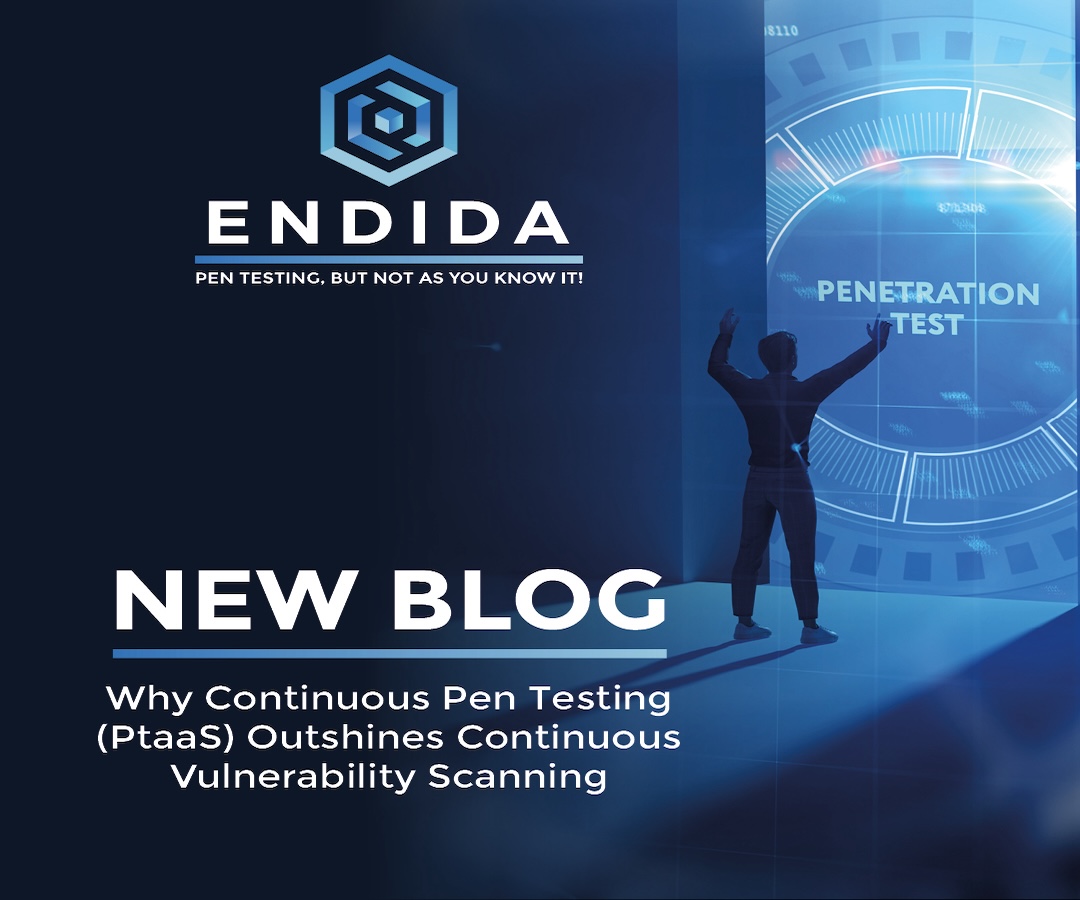Outshines Continuous Vulnerability Scanning
In the fast-paced domain of cybersecurity, it’s critical to stay ahead of potential threats. Continuous penetration testing also known as continuous AI-driven penetration testing is one of the two methods often used to fortify an organisation’s defences, the second one is continuous vulnerability scanning. While both are vital to a robust security strategy, there’s a strong case for the superiority of AI-enhanced penetration testing. Let’s explore this further.
What is Continuous Penetration Testing
Continuous penetration testing is a process through which we routinely run in-depth exploits on systems or networks for known vulnerabilities, much like a regular health check using automated tools to spot known weak spots. In contrast, continuous penetration testing (PtaaS) employs an AI platform, overseen by human experts, to simulate actual cyber attacks. This method is more akin to an in-depth exercise where the AI, guided by cybersecurity professionals, exploits vulnerabilities, mirroring real-world attack scenarios.

The Benefits of Continuous Penetration Testing
Continuous penetration testing, often referred to as continuous security testing or continuous pentesting, offers a comprehensive range of benefits that bolster an organisation’s cybersecurity resilience:
- Early Detection of Vulnerabilities: By continuously testing systems, the pentesting service identifies vulnerabilities early, reducing the window during which these issues can be exploited.
- Dynamic Remediation: Continuous penetration testing enables immediate remediation of detected vulnerabilities, enhancing the effectiveness of security measures and ensuring ongoing protection in a changing threat landscape.
- Compliance with Security Standards: Regular security testing helps organisations meet stringent regulatory requirements, ensuring compliance through proactive cyber security measures.
- Enhanced Security Posture: The ongoing nature of continuous pentesting keeps security protocols up to date against the latest threats, constantly refining and strengthening defences.
- Cost-Effectiveness: Although initiating a penetration testing service involves upfront investment, the long-term savings from averting major security breaches can be significant. Continuous testing helps prevent incidents that could result in substantial financial and reputational damage.
- Increased Stakeholder Confidence: Stakeholders gain confidence from knowing that the organisation prioritises cybersecurity and maintains high standards through continuous security testing.
- Integration with Development Processes: Embedding continuous pentesting within the software development lifecycle, particularly within DevSecOps practices, allows for the early detection and remediation of security issues, securing applications from the ground up.
Overall, the adoption of a continuous penetration testing service as part of an organisation’s cybersecurity strategy not only secures it against current and emerging threats but also supports a proactive stance in the ever-evolving digital threat landscape.
Simulating Real-World Attacks
The primary advantage of continuous AI-driven pen testing over simple vulnerability scanning is its realistic approach. This type of testing doesn’t just identify vulnerabilities; it actively exploits them to demonstrate how an attacker could breach the system and the potential consequences of such actions. This method provides a dynamic and authentic assessment of security risks, offering insights into both the existence and impact of security weaknesses.
Identifying Complex Security Weaknesses
While automated scans efficiently detect known issues, they lack the capability to spot complex, multi-step attack vectors that require the sophistication of human-like ingenuity, which AI can mimic. Pen testing platforms can uncover these vulnerabilities by combining AI’s processing power with the strategic oversight of human experts. This hybrid approach enables the identification of intricate security gaps that automated tools might miss.
Continuous Improvement
Continuous pen testing also enhances ongoing security improvements. Each test is an opportunity for learning, offering insights into specific vulnerabilities and the overall security environment. The PtaaS platform, together with human experts, provides actionable feedback that leads to stronger defence strategies, fostering a cycle of continuous security enhancement.
Compliance and Trust
In sectors where adhering to regulatory standards is crucial, penetration testing offers a significant advantage. Many regulations recommend or mandate penetration testing to verify the efficacy of security measures. Demonstrating a commitment to advanced testing like this can also build trust with clients and stakeholders, ensuring them that their data is safeguarded against the latest threats.
Cost-Effectiveness
Although it might appear more resource-intensive at first glance, continuous pen testing can be more economical, in fact it often costs around the same as a vulnerability scanner. Also, penetration testing is the only true way to identify and address complex attack vectors before they are exploited, enabling organisations to prevent the exorbitant costs associated with data breaches. This proactive approach can lead to substantial savings and safeguard the organisation’s reputation.
Adaptive Security Posture
Finally, the nature of pen testing ensures that security measures are not just reactive but proactively evolving. As cyber threats advance, so too do the capabilities of PtaaS, which is also guided by expert oversight. This adaptability is essential in a landscape where new vulnerabilities and attack methodologies are continuously emerging, offering a flexible and responsive approach to cybersecurity.
Conclusion
While continuous vulnerability has previously formed an essential part of maintaining cybersecurity, continuous penetration testing now offers a deeper, more proactive, and effective method. By emulating real-world attacks, identifying complex vulnerabilities, and promoting an adaptive security culture, pen testing ensures that organisations are not merely detecting vulnerabilities, they are actively reinforcing and advancing their defences. In the dynamic business of cybersecurity, this proactive, sophisticated approach is not just beneficial, it’s indispensable.






